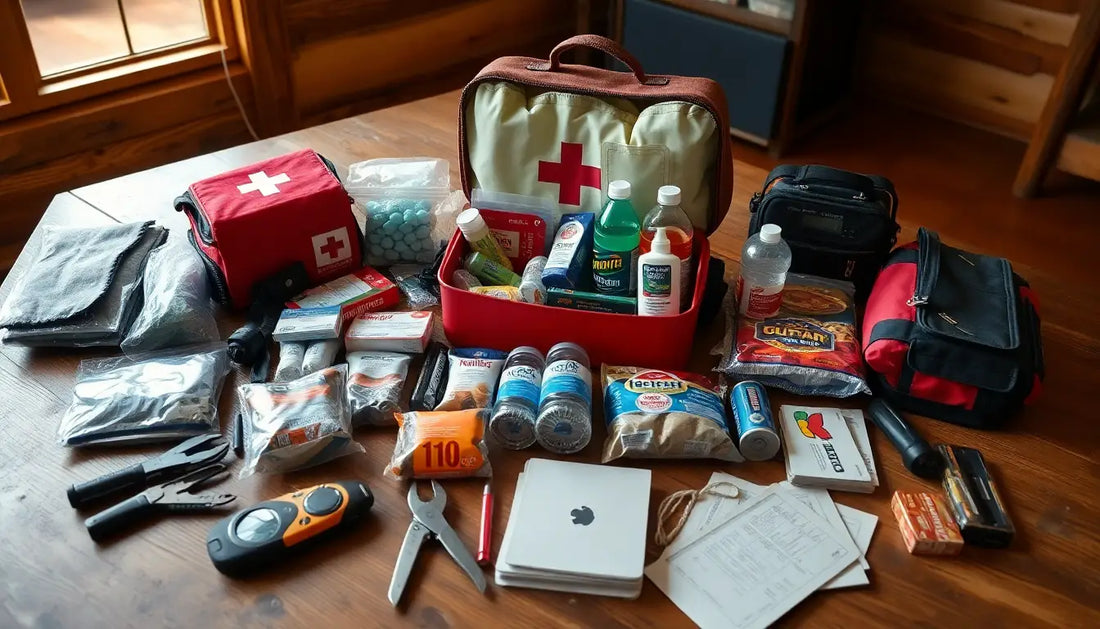
Building a Comprehensive Emergency Kit for Any Situation
TF AdventureIn today's unpredictable world, being prepared for emergencies is no longer a luxury, but a necessity. Whether it's a natural disaster, a power outage, or a sudden crisis, having a well-stocked emergency kit can make all the difference in ensuring your safety and survival. At TF Adventure, we understand the importance of being ready for any eventuality, which is why we've put together this comprehensive guide to building the ultimate emergency kit.
The Importance of Emergency Preparedness
Emergencies can strike at any time, and they can take many forms. From severe weather events like hurricanes, tornadoes, and blizzards, to man-made disasters like terrorist attacks or civil unrest, the potential for disruption to our daily lives is ever-present. By having a well-stocked emergency kit, you can ensure that you and your loved ones are prepared to weather any storm, literally and figuratively.
An emergency kit is not just about having the necessary supplies on hand; it's about having the peace of mind that comes with knowing you're ready to face whatever challenges may arise. In the event of a crisis, the last thing you want to be worrying about is where to find clean water or how to keep your family warm. With a comprehensive emergency kit, you can focus on the task at hand and respond effectively, rather than scrambling to gather essential items.
The Essential Components of an Emergency Kit
Building a comprehensive emergency kit can seem like a daunting task, but it doesn't have to be. By breaking it down into key categories, you can ensure that you have everything you need to weather any storm. Here are the essential components of an emergency kit:
First Aid Supplies
No emergency kit is complete without a well-stocked first aid kit. This should include bandages, gauze, antiseptic wipes, pain relievers, prescription medications, and any other medical supplies you or your family may need. It's also a good idea to include a first aid manual and any necessary medical equipment, such as a thermometer or blood pressure cuff.
Food and Water
In an emergency, access to food and clean water can be severely limited. Your emergency kit should include a supply of non-perishable, high-calorie foods, as well as a way to purify water, such as a water filter or purification tablets. It's recommended to have at least a three-day supply of food and water for each member of your household.
Shelter and Warmth
Depending on the nature of the emergency, you may need to shelter in place or evacuate to a safer location. Your emergency kit should include items that can help you stay warm and dry, such as blankets, sleeping bags, and rain gear. You should also have a way to start a fire, such as matches or a lighter, and a portable stove or camp stove for cooking.
Communication and Light
In an emergency, communication can be crucial. Your kit should include a battery-powered or hand-cranked radio, as well as a flashlight and extra batteries. You may also want to include a portable charger for your mobile devices, as well as a whistle or signal mirror to attract attention if needed.
Tools and Supplies
Depending on the type of emergency, you may need a variety of tools and supplies to help you navigate the situation. This can include a multi-tool or Swiss Army knife, duct tape, plastic sheeting, a manual can opener, and a map of your local area.
Personal and Hygiene Items
Don't forget to include personal and hygiene items in your emergency kit, such as toilet paper, feminine products, soap, toothpaste, and any necessary medications. It's also a good idea to have a change of clothes and sturdy shoes in your kit.
Important Documents
In an emergency, you may need to quickly access important documents, such as identification, insurance information, and emergency contacts. Keep these documents in a waterproof bag or container and include them in your emergency kit.
Building Your Emergency Kit
Now that you know the essential components of an emergency kit, it's time to start building your own. Here are some tips to help you get started:
- Make a list of the items you need and check them off as you gather them.
- Store your emergency kit in a easily accessible location, such as a closet or garage.
- Rotate and replace perishable items, such as food and water, every six months to a year.
- Customize your kit to fit the specific needs of your household, such as any medical conditions or special dietary requirements.
- Consider creating a "go-bag" that you can grab and go in the event of an evacuation.
Remember, being prepared for emergencies is not just about having the right supplies; it's about having the peace of mind that comes with knowing you're ready to face whatever challenges may arise. At TF Adventure, we're committed to helping you build the ultimate emergency kit and ensuring your safety and survival in any situation.
Conclusion
In today's unpredictable world, being prepared for emergencies is more important than ever. By building a comprehensive emergency kit, you can ensure that you and your loved ones are ready to weather any storm, whether it's a natural disaster, a power outage, or a sudden crisis. At TF Adventure, we're here to help you every step of the way, providing the essential supplies and resources you need to stay safe and secure. Don't wait until it's too late - start building your emergency kit today and take the first step towards a more prepared and resilient future.
